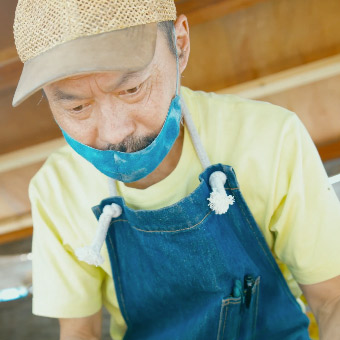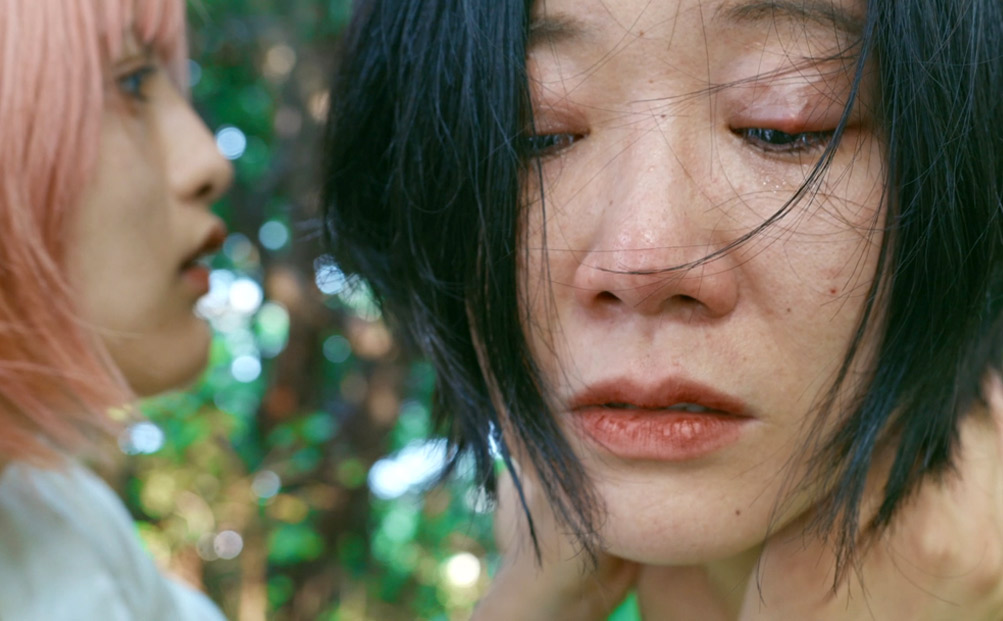Credit
Shingo Ota 太田信吾
Planning, directing,
cinematograph, editing
Film director and actor. Born in 1985, in Nagano Prefecture. Majored in philosophy and narrative theory at university. Interested in filmmaking as a device to remember and record alternative narratives that fall out of the larger narrative of history. His first film, “Graduation,” won the Excellence Award and Audience Award at Image Forum Festival 2010. Her first feature-length documentary film, “The End of the Special Time We Were Allowed,” was released at the Yamagata International Documentary Film Festival 2013 and in twelve countries globally. Since then, he has worked on edgy films, including “Liberation Zone,” “Imagination,” and “Sunrise Vibrations.” In 2021, he directed the WOWOW series, “Food Trucker Minegishi Minami.” Ota is also an actor, and his recent credits include “Unfulfilled Ghost and Monster” (produced by KAAT Kanagawa Arts Theatre, written and directed by Toshiki Okada), the drama “Giving Dreams” (WOWOW), and “Tokyo Weird Liquor” (TV Tokyo).
-
Kyoko Takenaka 竹中香子
Planning, scriptwriting,
performance (NUI)
Moved to France in 2011 and received the French National Actor’s Certificate in 2016 from the French National High School of Drama (first Japanese to do so). Takenaka appeared in many French national public theater plays in Paris. In 2017, she resumed her career in Japan, where her one-woman show, “The Problem of the Fairy,” written and directed by Satoko Ichihara, was performed in New York. In 2020, Takenaka began working with Canadian director Marie Brassard. In 2021, she received a French National Diploma in Theatre Education. She is currently performing in Satoko Ichihara's Madame Butterfly, a co-production with Theater Neumarkt in Switzerland.
-
Miwa Okuno 奥野美和
Planning, choreography,
and performance (BODY)
Miwa Okuno began performing modern ballet at the age of three. Since 2009 has been working both in Japan and abroad on works between dance and performance
based on a unique body method focusing on bones and flesh. In 2017, she graduated from the Tokyo University of the Arts, Graduate School of Fine Arts,majoring in Advanced Art Expression. In 2017 and 2020, she participated in a play by Canadian director Marie Brassard as a dancer. Recently, she has been focusing
on creating artworks that use the body as a material.
-
Uta 唄
Music, Location Coordinator,
Performance (UTA)
-
Cafard Sato キャファールさとう
Insect Supervisor,
Performance (TAKOGAWA)
Born Kishiwada City, Osaka Prefecture, in 1974.
Researches insect-eating cultures and cuisine while conducting ethnographic insect-eating research in Asia. He strives to popularize entomophagy through lectures,radio, television, and writing.
-
Itto Sakai 酒井一途
Line Producer, Location Coordinator,
Performance (GUEST HOUSE OWNER)
Born in Tokyo in 1992. Sakai is interested in connecting people to people, people to regions, people to art, to create a “free zone,” where all people are free from social roles, positions, attributes, and community norms. He holds workshops for “not acting,” to face the people before us and explore the one-to-one relationship. Since 2020, Sakai has been the coordinator of the Toyooka Theater Festival Fringe. There, he supports the research and fieldwork of the residency and the building of relationships with local people.
-
Sachia Kano かのうさちあ
Performance (FOOD TRUCKER)
Sachia Kano was born in Kobe after the Great Hanshin-Awaji Earthquake. His dream is to bring warm food, music, and energy in his handmade food truck to those around the world awaiting him.
https://aozorasatya.wixsite.com/my-site-8
-
Yusho Ogawa 小川祐章
Performance (PRIEST)
Born in Kinosaki-cho, Toyooka City, Hyogo Prefecture in 1976.
After graduating from Koyasan University, Ogawa trained at Koyasan Senshu Gakuin. He is 30th in line of succession at the temple of Kinosaki Onsen's guardian, Onsenji Temple.
-
Satoshi Ogawa 小川惺史
Performance (SON of the PRIEST)
Born in at Onsenji Temple in Kinosaki-cho, Toyooka City, Hyogo Prefecture in 2014. The son of Yusho Ogawa, he started contemporary dance at the age of three. Currently in the first grade of elementary school.
-
Takumi Terauchi 寺内卓己
Performance
(KIRYU-ZAIKU CRAFTSMAN)
Born in 1956, Terauchi started working in the family business in 1976. He became independent in 1985 (Takumi Kogei) and became a traditional craftsman of Toyooka Kiryu-zaiku in 1994.
Performance:
Shigeharu Aoyama, Keisuke Ishimaru, Nozomi Ishimaru, Shiori Ishimaru, Sakutaro Ishimaru, Genki, Hiroshi Hanafusa, Riho Tsunematsu, Yoshinori Hamagami, bozzo, Ayumi Mori, Jin Shiono, Sacchan, Alexandre Michel, Tomohiko Ogawa, Yuko Tsutsui
Sound Recordist: Takeshi Inarimori
Sound Mixing&Forey artist: Hayato Ichimura
Colorist: Toshimitsu Hoshiko
French translation supervision: Bertrand Lauret
Assistant director, Location Coordinator: Yumeki Kobayashi
Assistant Cinematographer: Kosuke Suzuki, Suzune Ichida
Executive Producer: Hidetoshi Katori Producer: Masumi Soga
Production Manager: Moemi Nagi Production cooperation: DUDES.inc
Production partnership: M.Mattina Co., Ltd., Hydroblast Inc., Sachiya, M.C.P, Insect Energy Research Institute
Copywriting: Ayumu Takenaka
Advertising art: Miyuki Uchida (NORA DESIGN)
Web design: Satomi Furuya Photo: bozzo
Special Collaboration: Infrarouge/ Marie Brassard
Cooperation (in alphabetical order):
Hiroshi Isaka, Shiori Kinoshita, Junko Shibuya, Muneharu Nakagai,Takayo Matsui, Aosachisoraya, Art Camp Tango Committee, Itami City Museum of Insects, Toyooka Art Action, Ido Bee Farm, Inabaya, Mikiya,Kinosaki Onsen Ryokan Management Study Group, Kinosaki Promotion bureau (Kinosaki City), Kinosaki Onsen Tourism Association, Kinosaki International Arts Center (Toyooka City), Kinosaki Literary Museum,Kumihama Park (Kyotango City), Bugs Farm, Takeno Tourism Association,Takumi Traditional craft, Toyooka City Eco house, The Japan Writers' Association, Onsenji Temple, NPO Committee for Making Exciting Kumihama





















